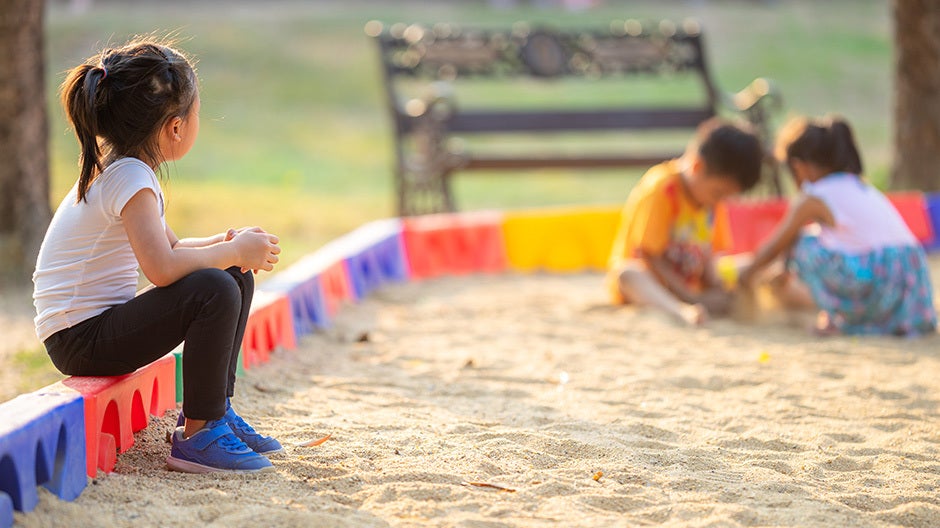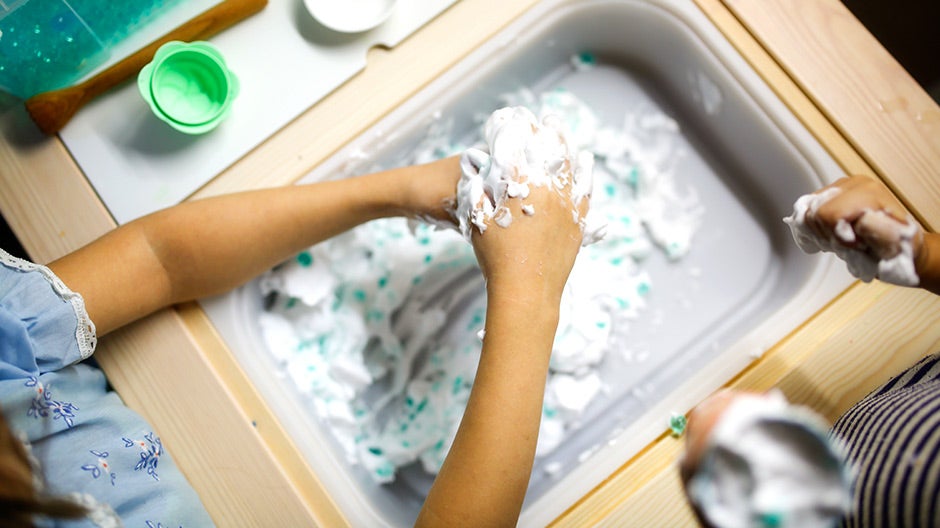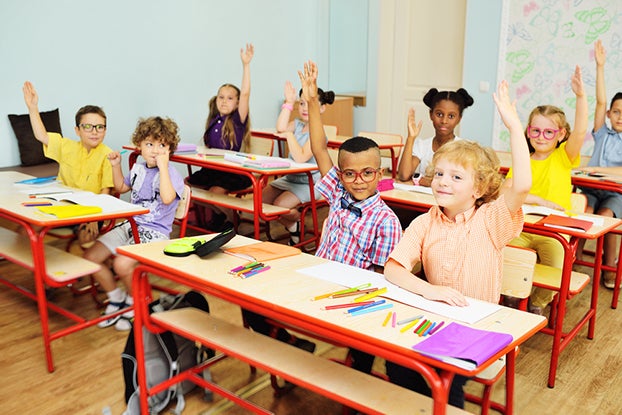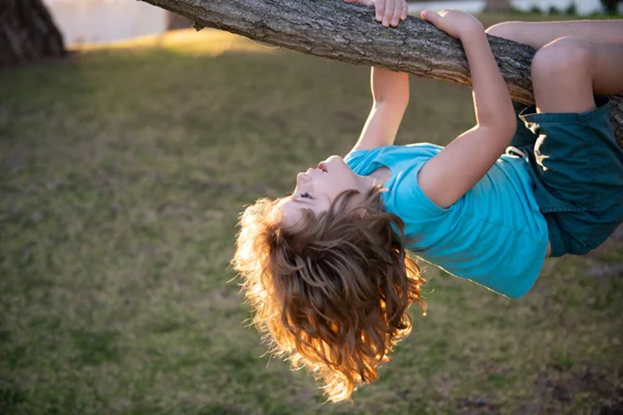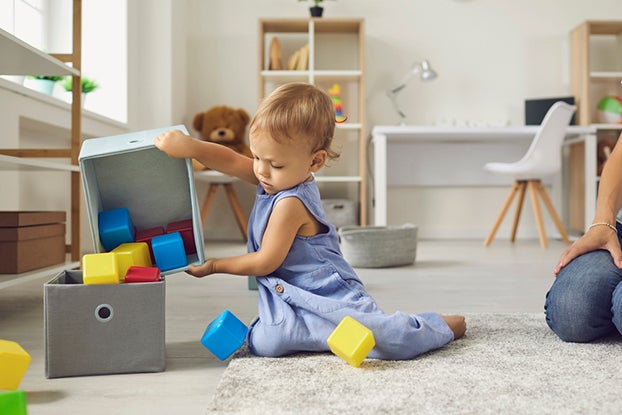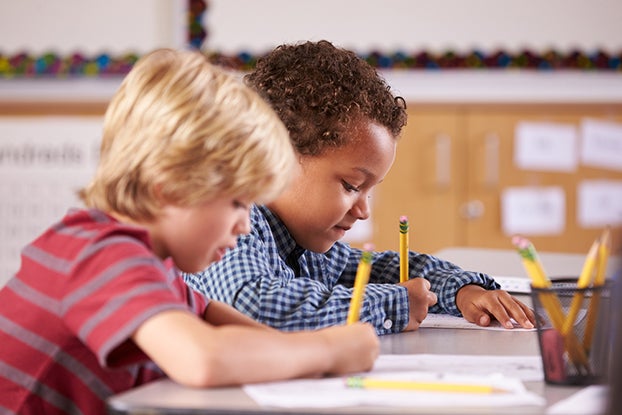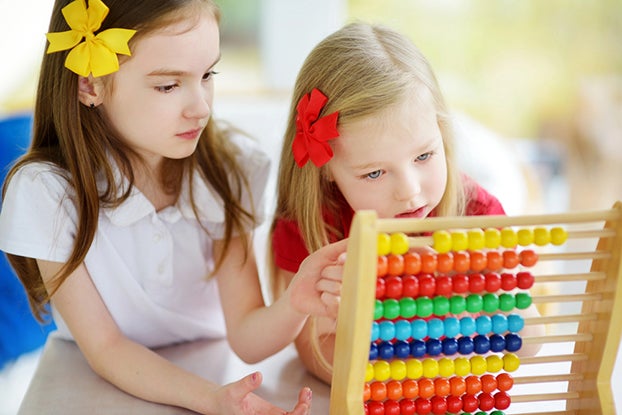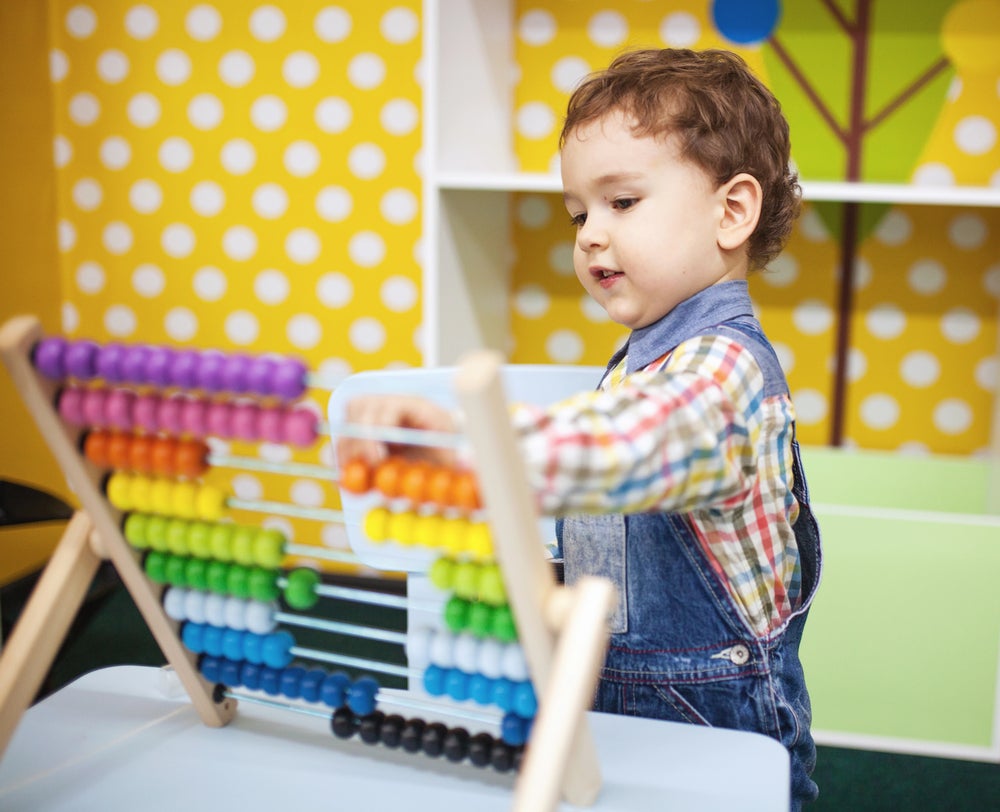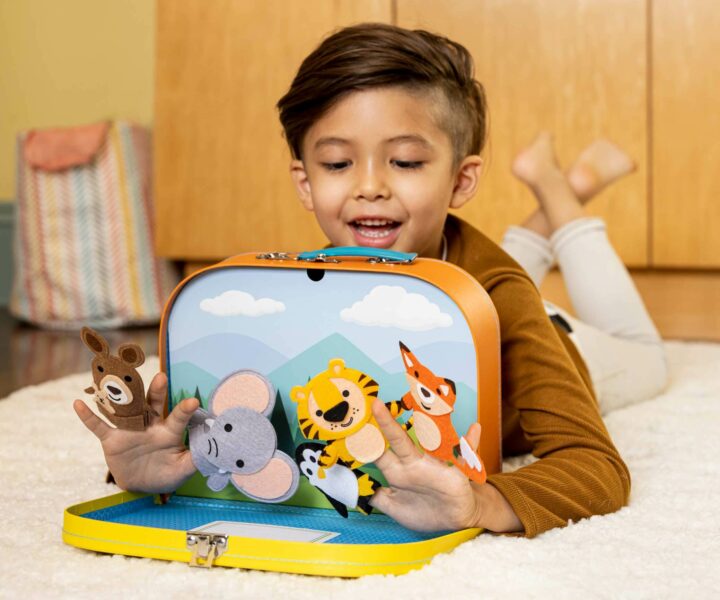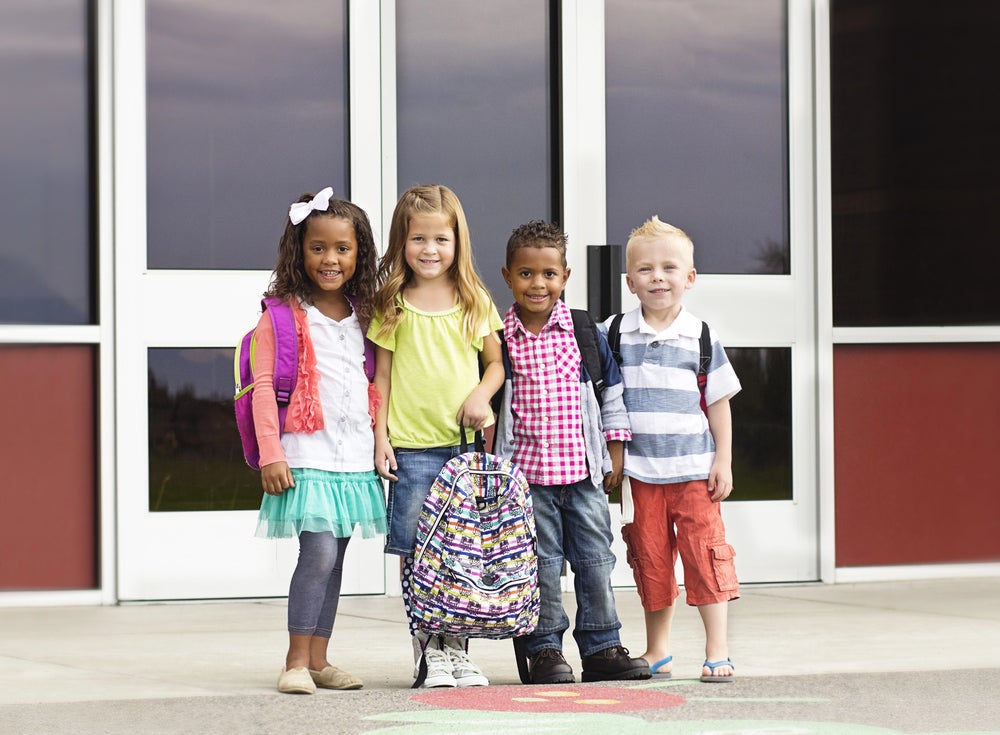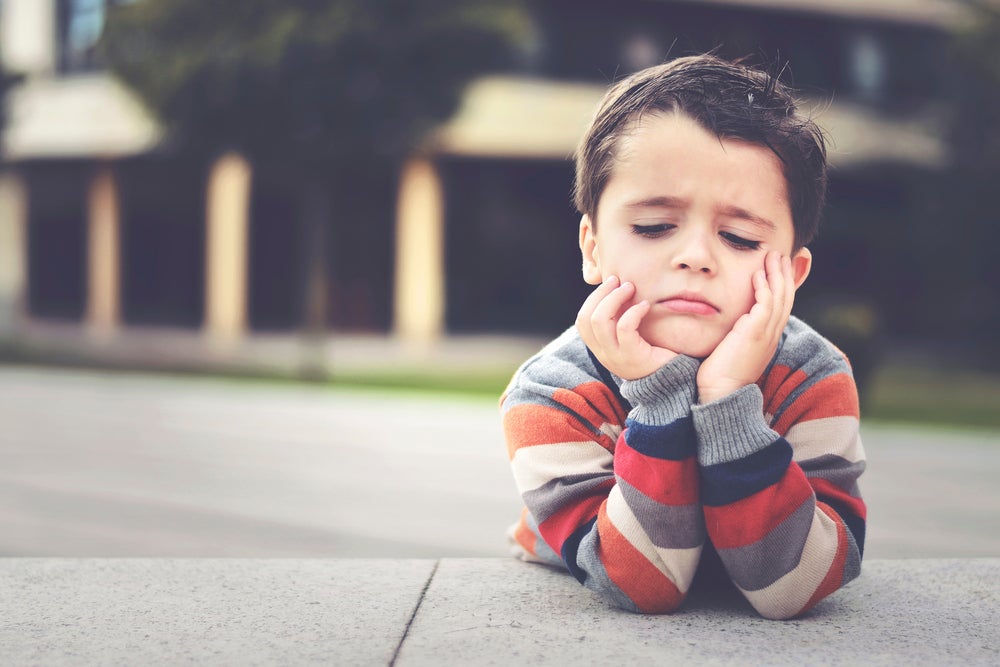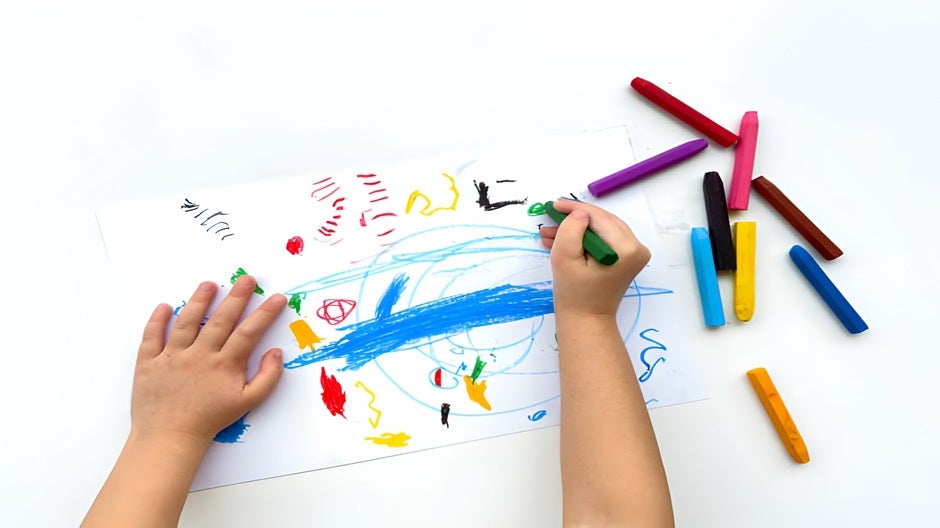“Kids are sponges.” Parents, teachers, and caregivers say this all the time, and you’ve probably seen it for yourself. A 3-year-old mimics her older brother’s language. A 5-year-old acts out something they see on TV. Behavior and vocabulary spread through an elementary school classroom faster than a meme on social media.
We know it happens, but why? And how can we channel it to help kids learn the most important skills at the most important times? The answer is a theory from psychology called vicarious learning (sometimes also known as observational learning).
The Short Cut
- Vicarious learning occurs when a child observes what happens when someone else does something and learns from it
- Parents can harness the power of vicarious learning by speaking aloud as they try something new, including voicing the consequences of their actions
- Vicarious learning is a great way to help kids develop important Character skills alongside a comprehensive program like Learn with Sesame Street
How Vicarious Learning Works
Vicarious learning happens when a kid observes someone else doing something, notices the outcome, and decides to try it for themselves.
In the classroom that might look like them noticing that when another student was kind, they were rewarded, and deciding to be kind themselves.
At home, it might look like a kid observing that when their older sibling gets upset they say, “UGH!” to get attention, and imitate them.
But kids don’t automatically imitate everything they observe (even though it sometimes feels like that!). First, they need to:
- Notice what happened
- Remember what happened
- Be physically able to imitate what happened
- Want to imitate what happened
As caregivers, we can use this (especially the last one) to help us put vicarious learning to work teaching kids the behaviors we want.
Why Kids Should Learn Vicariously
Learning vicariously is great for kids because it lets them learn without personally experiencing the consequences of an action.
Take not touching a hot pan on the stove. If a kid sees someone else touch the pan by accident, yelp “Ouch!” and stick their finger into cold water in the sink, they can learn not to touch the pan without getting their finger burned.
With no pain!
Vicarious learning is a powerful tool for teaching when experiential learning (in this case, touching the hot pan) doesn’t make sense.
Vicarious Learning Examples
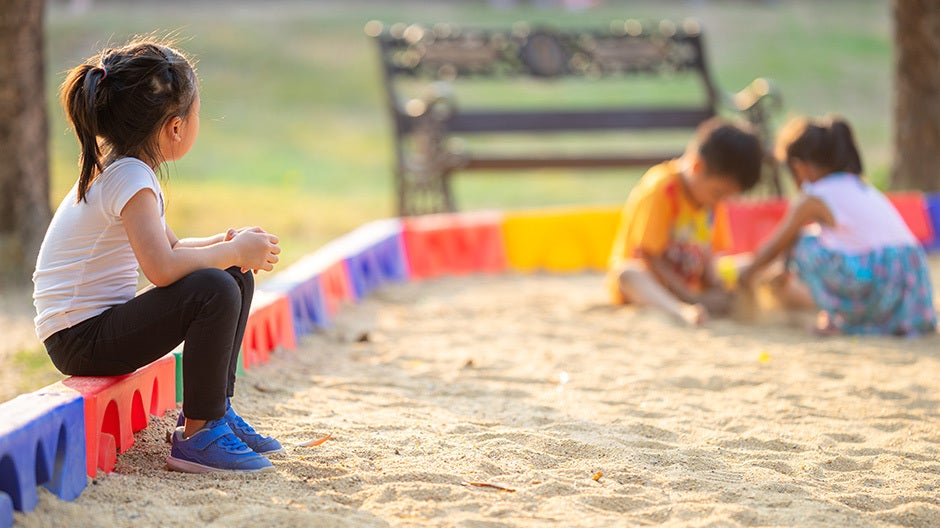
Vicarious learning isn’t only useful for physical safety. You can also see it at work in the following situations:
At Home
- A cousin seeks comfort from a parent by asking for a hug, and a kid learns to ask for hugs when they’re sad
- A sibling is upset, so they say they need some alone time and go to their room for a few minutes to calm down, and a kid learns to do the same
- A visitor tries to pet a grumpy cat, who hisses and swats at them, and a kid learns not to pet the grumpy cat
In the Classroom
- A student is praised or rewarded by the teacher for being kind to a friend, and other students learn that kindness is rewarded at school
- A student shares their crayons with a peer, and they both end up smiling and having fun together. Another student sees and learns that sharing can be joyful.
- The teacher calls on a student who raises their hand and waits patiently (rather than yelling out their answer), and another student learns to do the same to get the teacher’s attention
- A student is disciplined for hitting another student, and students learn that hitting has negative consequences
- A student volunteers to perform a song in music class and is applauded by the class, and other students learn that taking creative risks is rewarded at school
At a Friend’s House
- A friend gets a treat after they clear their plate from the table at dinner, and a kid asks for the same at home
- A friend’s parent gets them a snack right away after school, and a kid asks their parent for a snack after school at home
- A friend feeds the dog every night and seems proud of it, and a kid asks if they can feed the dog at home
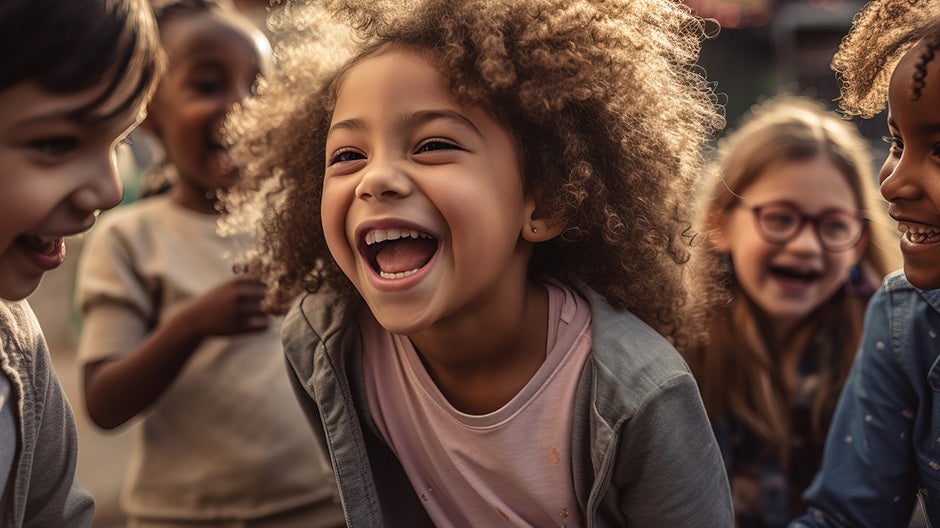
On the Playground
- Other kids laugh when a friend tells a joke, and a kid repeats the same joke at home
- Older kids are having fun playing a complicated game, and a kid tries to recreate it with their friends or siblings later
- A friend gets a small cut and asks a teacher for a bandage, and a kid starts asking for bandages when they get small cuts at home
Sometimes vicarious learning teaches kids behaviors that you want to reinforce, like asking loved ones for comfort. Other times it teaches neutral behaviors, like asking for a treat after doing a chore, that may or may not work for your family.
But it can also teach or reinforce behaviors you want to discourage, like a kid raising their voice when upset, hitting back when someone hits them, or using unkind words to get attention or feel powerful.
Setting consequences for negative behaviors and applying them consistently can help avoid this.
How to Use Vicarious Learning as a Parent
Using vicarious learning to teach your kids boils down to one important idea: What kids observe working for others to get something they want, they’ll likely try themselves.
This leads to three important parenting principles:
1. Treat Others Like You’d Treat Your Kids
If you’re trying to reinforce or discourage behavior in your kids, but you’re not consistent with their siblings, your partner, their friends, their cousins, or others, vicarious learning will muddle your message.
For example, let’s say you’re teaching them that shouting across the house isn’t a good way to get your attention, and they should come find you if they need you instead.
If you respond to their sibling (or your spouse!) shouting across the house for you, they’ll observe that and be more likely to keep shouting to get your attention.
2. Don’t Just Let It Slide
Imagine again that you’re trying to teach a kid not to shout across the house. Every time you break down and shout back, vicarious learning kicks in.
The kid sees that, contrary to what they’ve been told, shouting is a good way to get your attention.
And because it comes from the kid’s own observations, vicarious learning is powerful—kids often trust what they’ve seen for themselves over what you’ve told them if the two come into conflict.
3. Course-Correct In Front of Everybody
That said, we get it: It’s hard to never shout back across the house! You’re going to sometimes, even if it’s just to say “You need to come speak to me!” And when you do, kids can get mixed messages about whether shouting across the house works or not.
Luckily, in order for vicarious learning to work, kids need to notice what happened, remember it, be able to imitate it, and want to imitate it.
You can’t control the first three, but you can exert a strong influence on the fourth.
Taking a second to say, in front of all the kids in the house (because they’re all observing, not just the one who shouted), something like, “I just shouted across the house back to you. Oops! I shouldn’t have done that,” will help kids understand that even though they saw shouting work this time, it won’t necessarily be like that if they try it in the future.
You can even reinforce it with a lighthearted consequence (“Now I can’t speak until someone says ‘Mommy’ again.”).
Vicarious Learning vs. Modeling
Parents are often told to model good behavior for their kids (and it’s important—kids learn that way too!).
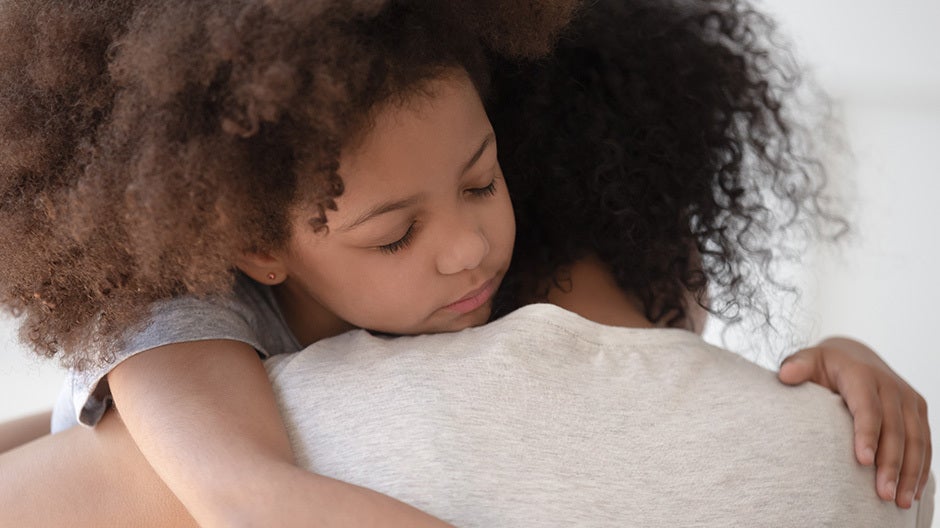
Taking advantage of vicarious learning can sometimes feel like the same thing, but it’s slightly different.
When you’re modeling behavior for your kids, they’re learning directly from what you do. Vicarious learning occurs when kids observe what happens to other people.
If you ask for a hug when you’re feeling sad, that’s modeling. If a child’s sibling or friend asks for a hug when they’re feeling sad and the child observes, remembers, can imitate the behavior, and wants to imitate it, that’s vicarious learning.
Building Character with Begin
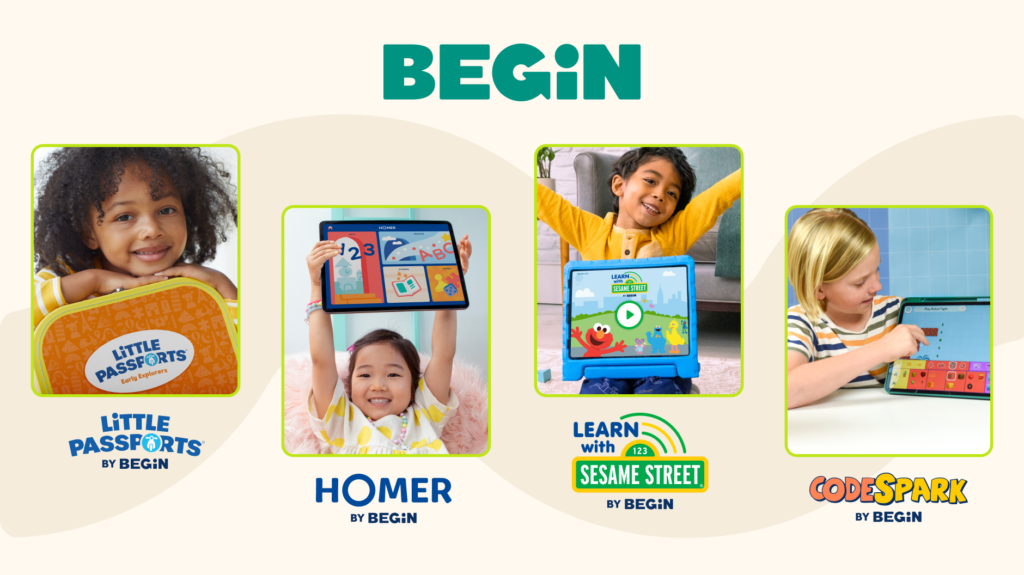
At Begin, we understand that Character—how kids interact with the world—is one of the most important skill areas for kids to develop.
Kids with strong Character skills enjoy better mental health and well-being, as well as higher income and educational levels later in life. It matters!
Our Learn with Sesame Street social-emotional learning program gives kids access to engaging, effective Character-building content created by Begin and Sesame Workshop.
It includes a kid-safe, ad-free, replayable app full of engaging games, original classes with Elmo and friends, videos from Sesame Workshop, and a Grown-Up Guide by Begin to help parents understand what their kids are learning and how to reinforce it.
Whether through Learn with Sesame Street or our learning membership that grows with your child, Begin can help the kids you love develop the most important skills for 21st-century success, including Character. Take our quiz and see how we can help your family today!
